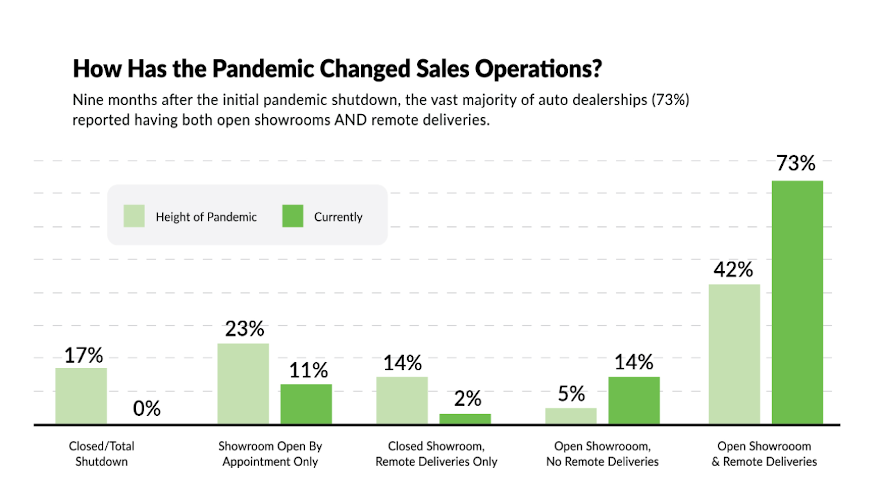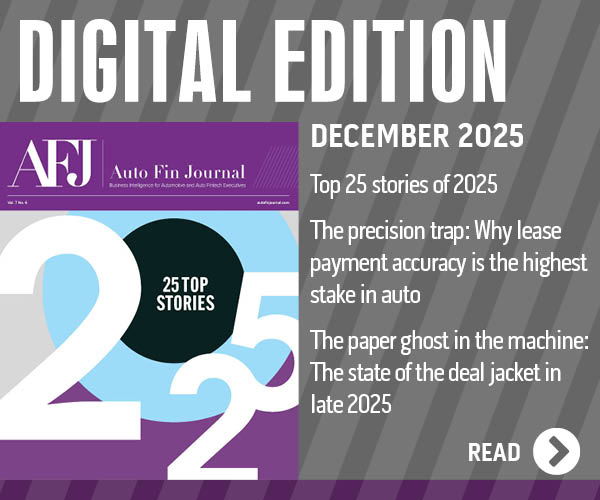10 primary findings from eLEND Solutions’ latest dealer survey

Graphic courtesy of eLEND Solutions.
By subscribing, you agree to receive communications from Auto Remarketing and our partners in accordance with our Privacy Policy. We may share your information with select partners and sponsors who may contact you about their products and services. You may unsubscribe at any time.
IRVINE, Calif. –
Digital financing innovator eLEND Solutions highlighted more than 10 findings from its latest dealer survey, reiterating how the COVID-19 pandemic has encouraged dealerships to embrace digital retailing as a low-touch transaction alternative and how this adoption of technology has changed traditional dealer process and perception.
Based on a survey fielded by eLEND Solutions among dealers during the fourth quarter, eLEND Solutions indicated that perhaps one of the most important findings in the report is how dealer perceptions have shifted as a result of the change to digital retailing.
According to the survey results released on Monday, 53% now see digital retailing as a deal generator — what study dubbed “the start of the deal” — while 47% continue to view digital retailing as little more than enhanced lead generation.
The resulting survey report titled, “The Pandemic Drove a Great Leap Forward in Digital Retailing Adoption” explored the shift in dealer acceptance and application of digital retailing, while also investigating whether this forced innovation has been a blessing — or curse — for dealers.
“Confronting change can be a painful challenge for dealers, which is understandable given the risk inherent to implementing a new process, retraining staff, and the application of technology which can cause significant upheaval and anxiety in a store…so I can see it could be viewed as a ‘curse,’” eLEND Solutions chief executive officer Pete MacInnis said in a news release.
“What this study reveals, however, is that while dealers were forced into change by the pandemic, they quickly saw the value and have embraced it as a blessing in disguise,” continued MacInnis, referencing that among those digital retailing blessings is a trend toward higher profit-per-vehicle retailed (PVR) and reduced transaction times.
Subscribe to Auto Remarketing to stay informed and stay ahead.
By subscribing, you agree to receive communications from Auto Remarketing and our partners in accordance with our Privacy Policy. We may share your information with select partners and sponsors who may contact you about their products and services. You may unsubscribe at any time.
Other key highlights from the newest eLEND Solutions digital retailing survey include:
• 80% of auto dealers said the pandemic has accelerated their adoption of digital path-to-purchase experiences.
• 90% say they expect to continue, or accelerate, digital retailing at their dealership
• 53% see digital retailing as deal generation, “the start of the deal”
• 20% define digital retailing’s ‘relative finish’ as contracting and remote delivery
• 90% of say their websites are more transactional today than they were pre-pandemic.
• 87% report that digital retail-initiated transactions have resulted in unchanged, or higher, PVR (profit-per-vehicle retailed)
• 64% said they reduced total transaction times compared to the pre-COVID average
• 38% reported a reduction of at least 30 minutes off the transaction time
• 56% of dealers said that ‘process change’ was the most difficult aspect of transitioning to a digital-first sales process
• 23% said CSI scores improved with digital retail adoption
“Old habits die hard in the auto industry, so this shift in perception is pretty extraordinary,” MacInnis said. “It’s inspiring to see dealers evolve to, and embrace, technology that will expand the power and value of their business model. Getting to over 50% of auto dealerships viewing digital retailing as ‘deal’ versus ‘lead’ generation is huge.”
The survey showed that dealer acceptance of digital retail as a “deal” maker is supported by their opinions about the actual steps in the experience: Only 14% of dealers see digital retailing ending at the first pencil, and almost 30% see its “relative finish” as getting to a qualified deal structure — including trade and down payment.
“The positive impact that digital retailing has on PVR is a clear myth-buster,” MacInnis said. “Dealers should view this as a signal that it’s time to rethink the common belief that digital retailing has an adverse impact on PVR, and realize that — pandemic or not — consumers now think digital retailing is a normal and necessary part of their vehicle transaction.”
The report also mentioned another silver lining of COVID-19 has been the industry’s rapid adoption of digital buying experiences to meet consumers' demands for a low-touch transaction.
“The survey findings tell us that the pandemic was key to digital adoption,” MacInnis said. “It’s entirely likely that the same level of adoption, without a pandemic, could have taken up to five years.”
MacInnis pointed out that the survey also showed that challenges remain with the in-store process.
Just 23% of dealers surveyed said that CSI scores had improved, with 66% seeing no change at the time of the survey. MacInnis noted that one possible explanation is that digital retailing technology, and the required process changes, had not yet been widely implemented.
While most dealers ranked the transition to a digital-first sales process as “not extremely difficult,” 56% said that the hardest aspect was process change. MacInnis suggested the customer experience could well be hampered by online to in-store redundancies.
“Customers don’t want to do what they did online at the dealership,” MacInnis said. “They have expectations that starting the deal online means that they’ll save time at the dealership.”
To download the full survey report, go to this website. Officials from eLEND Solutions will be at the 2021 NADA Virtual Expo, with details available on this website.


